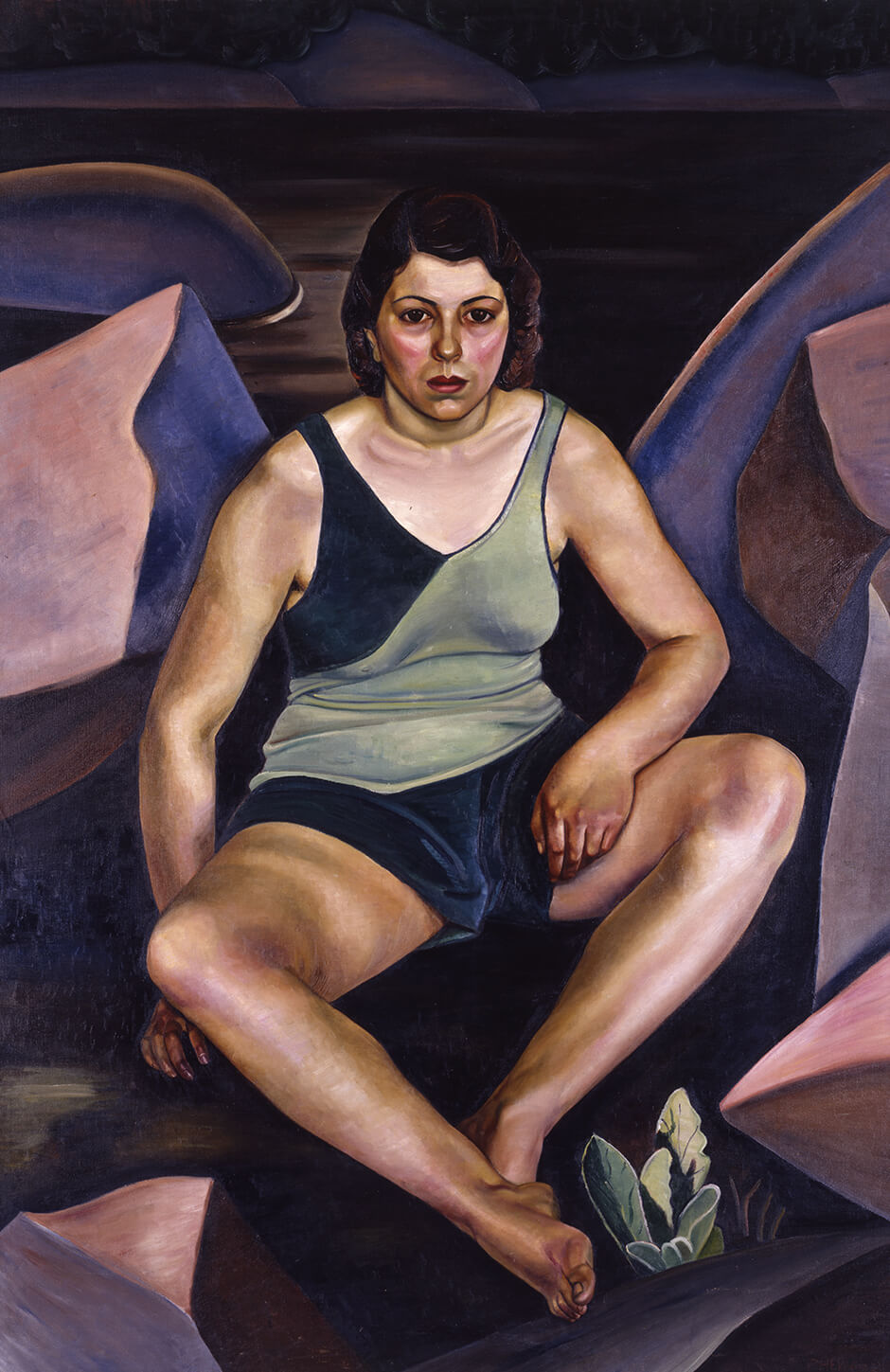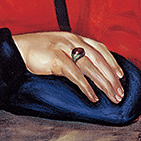The Bather 1930

Prudence Heward, The Bather, 1930
Oil on canvas, 162.1 x 106.3 cm
Art Gallery of Windsor
The Bather was the most controversial painting in Heward’s oeuvre during her life. This painting stands as evidence of the artist’s commitment to portraying female subjects with an unflinchingly unidealized approach. The sitter’s identity is unknown, Heward not having named her in the title, and we do not know whether the artist knew her, other than as a model.
Unlike many of Heward’s paintings that were critically lauded when first exhibited, this work received harsh reviews. In contrast to the sitter in the similarly titled The Bathers, 1937, by Montreal-based artist Edwin Holgate (1892–1977), Heward’s subject in this painting sits in an unflattering pose, her shoulders hunched while she looks out at the viewer, whereas Holgate’s bather does not meet the viewer’s gaze.

Painted in 1930 The Bather did not appear in an exhibition until 1933, as part of the Canadian Group of Painters show at the Art Gallery of Toronto (now the Art Gallery of Ontario). In his exhibition review, Robert Ayre referred to Heward’s “coarse, vital bather,” and he prophesied that “the pretty, pretty school will not like … Prudence Heward’s ‘Bather,’ and so the fight against reaction goes forward.”1
Reviewers such as Ayre tended to single out The Bather as an example of the modernist direction of the group.2 This was not necessarily a compliment. When faced with European modernist art at the famous 1913 Armory Show in New York, many Canadian critics had hostile reactions, and some commentators were still suspicious of modern art in the early 1930s.3
In a satirical illustration titled “An Artist Draws His Impressions of ‘Expressionist’ Art,” which appeared in the Toronto Evening Telegram on November 25, 1933, a caricature of The Bather appears alongside other caricatured paintings. The expression of Heward’s bather has been altered to a look of delighted surprise directed at the “lettuce” (accompanied by fork and spoon) near her feet. The large rocky formations have been transformed into broken plates. The text reads: “Even ‘The Bather’ made the artist hungry. He thought it was a cook watching a salad sprout with forks, spoons and all!”4
This parody attempts, and fails, to erase the seriousness and attention with which Heward painted her sitter. That the unidealized white female subject caused anxiety in viewers of the time indicates that Heward had produced a work that challenged notions of how women should be represented in early twentieth-century Canadian painting.

 About the Author
About the Author
 More Online Art Books
More Online Art Books
 Acknowledgements
Acknowledgements